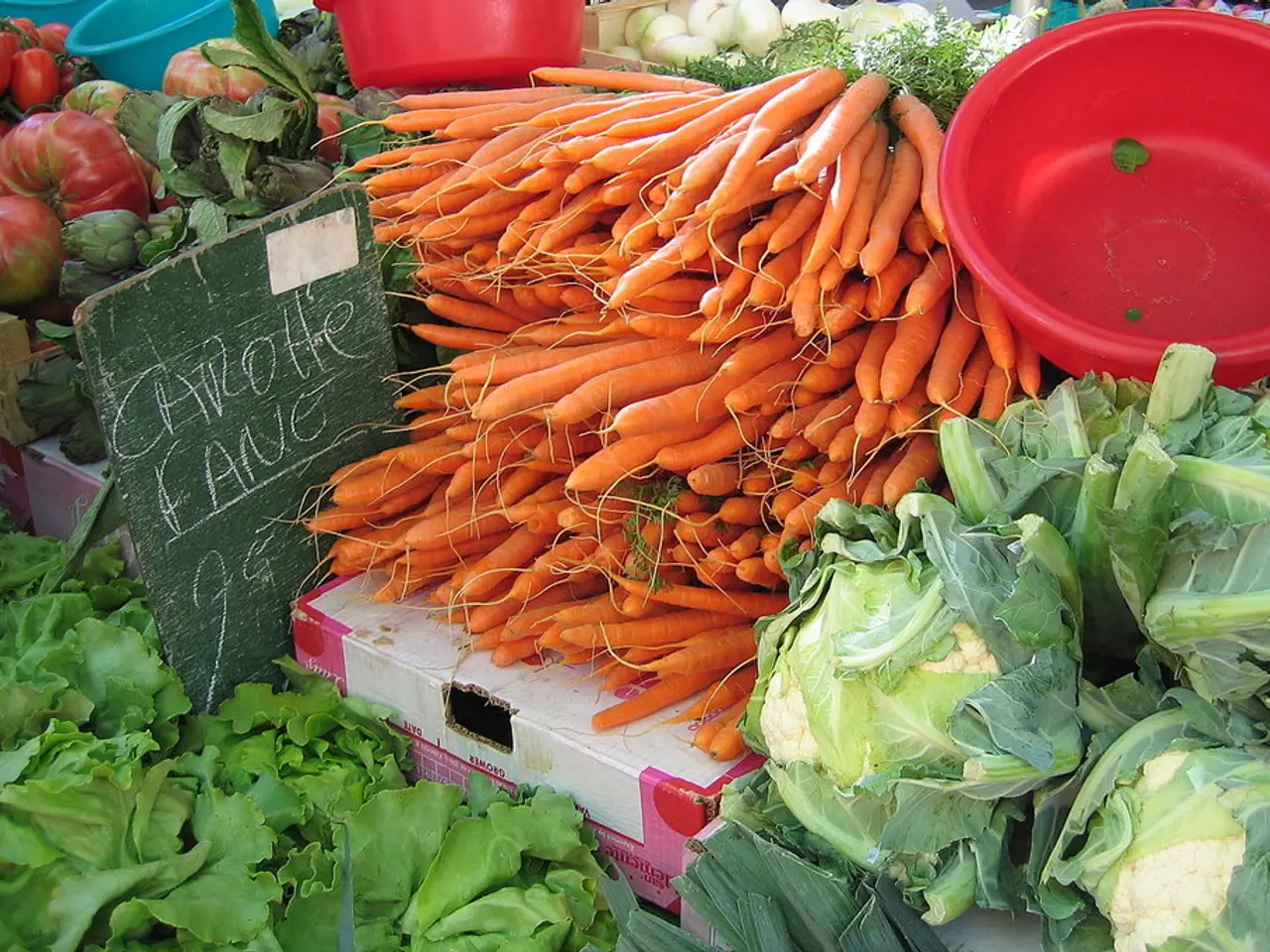Potential export losses of 60 billion baht due to Thai-Cambodian border closure, according to DFT.
Article:
Thai-Cambodian Border Closure: Potential 60 Billion Baht Hit to Border Exports
Shut down at the Thai-Cambodian border could cost Thai businesses up to 60 billion baht if the situation drags on till year-end, the Department of Foreign Trade (DFT) has warned.
Arada Fuengthong, DFT chief, shared this disheartening news on a recent Friday. Trade between the two countries during the first five months of 2025 had been on a steady incline, reaching 80.72 billion baht, an impressive 11.20% increase compared to the same period last year.
Thai exports totaled 63.07 billion baht, marking a 9% growth, while imports reached 17.64 billion baht, soaring by 20%. This has resulted in a substantial trade surplus of 45.43 billion baht for Thailand.
Trade in May alone reached 16.11 billion baht, a 7% increase from the same month last year, with exports hitting 12.85 billion baht (a 6.20% increase) and imports standing at 3.25 billion baht. This left Thailand with a noteworthy trade surplus of 9.59 billion baht in May.
However, Arada warned that trade may plummet in June due to the border closure which commenced on June 7, suspending both the movement of people and goods, as well as tourism - both domestic and international.
The Commerce Ministry has been proactively strategizing ways to support businesses, proposing new trading spaces in government buildings, private-sector areas, and shopping malls.
The agricultural sector is anticipated to be the hardest hit due to the border closure, with vegetables and fruits taking the brunt. However, the impact has been somewhat mitigated as it coincides with the end of the season. The ministry has been collaborating with both public and private agencies to purchase and distribute these goods domestically.
Regarding consumer goods and industrial products, the ministry is aiding exporters by identifying alternative transportation routes, finding new markets, and encouraging online sales.
On the imports side, primarily cassava, which is used for processing and export, Arada insisted that there are alternative sources, particularly Laos which accounts for over 60% of Thailand's cassava imports.
Arada emphasized that the border closure would predominantly influence cross-border trade, but its effect on overall Thai-Cambodian trade would be limited as Thailand also exports goods to Cambodia by sea.
The border closure poses a significant risk to Thailand, with daily losses potentially reaching 700–800 million baht. This is particularly concerning for small and medium-sized enterprises (SMEs) that rely heavily on cross-border trade.
tags* Border Exports* Thailand* Cambodia* EXPORTS* IMPORTS* economy* closure* tensions* DFT
Enrichment Data:
The Thai-Cambodian border closure in 2025 is expected to have significant economic impacts on Thai businesses, especially those engaged in border trade, while also prompting exploration of alternative solutions to mitigate losses.
Potential Impacts on Thai Businesses - Border Export Decline: The closure could cause a 60 billion baht reduction in Thai border exports to Cambodia if it continues until year-end, lowering overall border trade with neighboring countries by about 1% and causing Thailand to miss its original 3% growth target for border trade, now projected at 1.8-2% growth instead. - Daily Revenue Loss: Thailand risks losing 700–800 million baht in revenue per day from the closed border, severely impacting small and medium-sized enterprises (SMEs) that rely on cross-border trade. - Agricultural Sector Effects: Though Thailand’s agricultural exports to Cambodia are limited and thus less impacted, certain farmers—especially those supplying seasonal vegetables and fruits—might suffer from disrupted market access. Meanwhile, Thai industries dependent on Cambodian cassava (worth 9 billion baht annually) face supply-chain challenges but are considering sourcing from Laos or substituting other raw materials. - Trade and Investment Disruptions: Key exports affected include agricultural products, processed foods, construction materials, and consumer goods. Delays at border checkpoints could lead to lost revenue, higher costs, and slower border trade. Persistent tensions could also dampen Thai investment interest in Cambodia, with operators potentially shifting investments to more stable regional alternatives. - Tourism and Local Economy: Provinces near the border such as Sa Kaeo, Si Sa Ket, and Buriram could experience declines in tourism revenue and general economic activity due to restricted cross-border movement.
Alternative Solutions and Mitigation Measures- Government Assistance and Monitoring: The Department of Foreign Trade, working with provincial offices and customs checkpoints, is closely monitoring the situation and providing daily updates. Special task forces manage the border situation to ease trade flow when possible.- Clearing and Redistribution Efforts: The Commerce Ministry and Agriculture Ministry have started efforts to assist affected farmers by coordinating with modern trade groups and purchasing seasonal produce to redistribute domestically, reducing farmers' losses.- Exploring Alternative Transport Routes: To mitigate impacts, authorities are investigating other transport options for goods affected by the closure to maintain supply chains and limit economic fallout.- Sourcing Alternatives: Thai industries are considering sourcing raw materials like cassava from alternative suppliers such as Laos to replace Cambodian imports if border disruptions continue.- Dialogue and Negotiation: Business groups and government agencies remain hopeful for a peaceful resolution to reopen the border, as sustained conflict would exacerbate economic hardships. Constructive negotiation is viewed as crucial to restoring confidence and trade stability.
- The border closure between Thailand and Cambodia may not only have an impact on cross-border trade, but it could also affect other sectors like international tourism, potentially deterring travelers from visiting provinces near the border such as Sa Kaeo, Si Sa Ket, and Buriram.
- The suspension of transport across the Thai-Cambodian border could influence the overall economy, not just in trade, but also in finance and investing, as businesses might reconsider their plans to invest in a region with ongoing tensions.
- The impact of the border closure on personal-finance could be significant for small and medium-sized enterprises (SMEs) that heavily rely on cross-border trade, as they risk losing a substantial portion of their daily revenue, potentially totaling 700–800 million baht.
- To counteract the potential decrease in exports and the loss of revenue, the Commerce Ministry is proposing new trading spaces in various locations such as government buildings, private-sector areas, and shopping malls to keep businesses operational and maintain the flow of trade.
- The agricultural sector, in particular, might experience a hardship due to the border closure, but the ministry is addressing this by collaborating with public and private agencies to purchase and distribute domestic goods, helping mitigate the impact on farmers during the end of their season.







